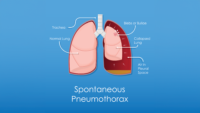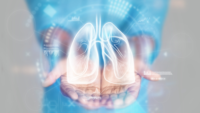Key takeways
|
Cancer survivors, who are at a higher risk of chronic pain than the general population, require detailed assessment to help identify the cause of their pain. That assessment is the first step in developing a comprehensive treatment plan that controls your patient’s pain, improves quality of life, and increases functional status with minimal risks and adverse effects.
Definitions are important
First, let’s define some terms. Cancer survivors, can be defined in two ways:
1. someone who has completed treatment and shows no evidence of disease
2. someone at any point on the spectrum from diagnosis to death.
Pain can be categorized as acute, chronic, neuropathic, visceral, or somatic. It can be described as stabbing, throbbing, aching, cramping, and squeezing. (See Defining pain.)
No matter how it’s described or defined, the experience of pain is unique to each person and can be complicated by emotional, physical, psychosocial, and spiritual issues.
This article focuses on cancer survivors who show no evidence of disease but are experiencing chronic pain.
Risk for undertreatment
Various factors can put cancer survivors at risk for undertreatment and influence how they experience pain. Everything from emotional and spiritual distress to age, race, ethnicity, gender, and social support can impact pain assessment, perception, and management.
Patients at especially high risk of undertreatment include the elderly, children, minorities, and those who are active drug abusers or have a history of drug abuse. Older patients, for example, can be at a higher risk of an incomplete or difficult pain assessment because of barriers such as memory or hearing loss, confusion, or fear of being a burden. Studies have shown that elderly men, in particular, are more likely to be stoic in their expression of pain, which may require you to be more creative in your pain assessment.
Ethnic, racial, and cultural minorities face a risk of underassessment and undertreatment because of language barriers or a lack of trust in the healthcare team. Provider bias can also create barriers to pain management.
Patients may be reluctant to report pain if they recognize it as a possible sign of cancer recurrence. Cost and availability of treatment also create barriers to care, as can a lack of social support to help with tasks such as transportation and medication administration.
Cognitive barriers can lead to a patient misunderstanding the illness or the source of the pain. And feeling a loss of control or of being abandoned by God can intensify the pain experience, as can depression and anxiety.
In some cases, a patient may be undertreated due to the clinician’s lack of pain management education or a reluctance to prescribe opioids.
Possible pain sources
If your patient complains of new acute pain, this might indicate a cancer recurrence and should be promptly assessed. If the pain is severe and uncontrolled, your patient may require emergency medical treatment.
However, many cancer survivors experience chronic pain, and your knowledge of cancer pain syndromes helps identify the cause of pain, and in turn can help determine the best treatment. Cancer and its treatment can be debilitating, which also may contribute to pain syndromes and loss of functional ability.
● Surgery may contribute to chronic pain syndromes. For example, 20% to 30% of patients have chronic neuropathic pain in the chest wall after mastectomy. Many patients also experience chronic neuropathic or somatic pain after thoracotomy. In addition, procedures that result in adhesions, lymphedema, nerve damage, or other complications can contribute to ongoing pain in cancer survivors.
● Radiation can cause chronic pain related to the location of radiation therapy. For example, brachial plexus damage during radiation can cause ongoing neuropathic pain called brachial plexopathy. Radiation of the lower intestine can cause ongoing radiation proctitis, and osteoradio-necrosis may result from radiation for head and neck cancer.
● Chemotherapy can induce peripheral neuropathy due to neurotoxicity. This generally symmetrical neuropathic pain in the hands and feet depends on the type of chemotherapy, dose, and duration of exposure.
● Hormonal therapy may lead to joint pain, myalgia, and osteoporotic compression fractures.
● Steroids put patients at risk for osteoporosis, osteonecrosis, and pathologic fractures.
● Stem-cell transplantation increases the risk for graft vs. host disease (GVHD). Patients with GVHD may experience GI pain and distress, joint and muscle aches, and other symptoms affecting areas such as the liver, skin, and eyes.
If you’re unable to identify a specific cause for your patient’s pain related to his or her cancer history, consider that the pain may not be cancer related. It could be caused by another illness or related to a patient seeking opioids for misuse.
Pain assessment
Because pain can indicate recurrent disease, a secondary cancer, late adverse reactions to treatment, or a condition unrelated to cancer, assess your patients for pain at every visit. The goal is to determine the source of the pain and if current therapies are helping to control it. You might find that using a mnemonic such as OLD CARTS is helpful. (See Ask the right questions.) To help your patients prepare for a pain assessment, recommend that they keep a pain diary to document when pain occurs, the possible cause of the pain, and how it responds to interventions. The American Cancer Society website offers a pain diary you can print and share with patients.
A thorough history is especially important in cancer survivors because different cancers and cancer therapies can cause predictable chronic pain syndromes even after the cancer is controlled or cured. Ask the patient if he or she has experienced this pain in the past and if it was present before the cancer diagnosis. This may help determine if the pain is unrelated to the cancer or its treatment, which may warrant different treatment.
Managing pain
Tailor pain management to the patient’s individual needs. If possible, pain management should be planned by an interdisciplinary team that includes the patient’s healthcare provider, nursing staff, and other team members as required. The pain management plan should incorporate both pharmacologic and nonpharmacologic therapies. Focus on improving pain control and functional status while balancing the risks and benefits of treatment.
Pharmacologic therapy
The information gathered from the pain assessment helps prescribing clinicians select appropriate pharmacologic therapy, balancing risks and benefits.
● Nonsteroidal anti-inflammatory drugs (NSAIDs), such as ibuprofen, naproxen, and ketorolac, relieve inflammation and are recommended for pain associated with inflammation and bone cancer. Risks include GI upset, bleeding, and ulcers; fluid retention; increased blood pressure; increased risk of cardiac events; and decreased renal function.
● Acetaminophen can help relieve mild or moderate pain and reduce fevers. Risks include liver dysfunction.
● Corticosteroids, such as dexamethasone and prednisone, help relieve inflammation and alleviate other symptoms such as anorexia, nausea, and fatigue. Risks include GI upset, bleeding, and ulcers; increased appetite and weight gain; insomnia; delirium; anxiety; muscle weakness; infections; and hyperglycemia. Corticosteroids aren’t recommended for long-term use in cancer survivors with chronic pain.
● Anticonvulsants, such as gabapentin and pregabalin, work to relieve neuropathic pain. Risks include dizziness and sedation.
● Tricyclic and serotonin norepinephrine reuptake inhibitors may relieve neuropathic pain. Risks include QTc prolongation and drug interactions.
● Topical and local analgesics can be useful in some patients with neuropathic pain. Options include lidocaine patches; compounded creams and gels containing baclofen, amitriptyline, and ketamine; and topical NSAIDs.
Opioids
Opioids, such as morphine, hydromorphone, oxycodone, fentanyl, and methadone, bind to opioid receptors in the central nervous system to reduce the perception of pain. Risks include sedation, confusion, constipation, nausea, vomiting, and urinary retention. Opioids may be appropriate if:
● pain can’t be controlled by non-opioid analgesics and nonpharmacologic measures
● pain limits your patient’s functional status
● pain affects your patient’s quality of life
● opioid benefits outweigh risks.
Knowing how to identify patients who may be at risk for opioid misuse and abuse is important to ensure patient safety and wellbeing.
Assessing for opioid misuse Because of the risks of opioid therapy, practitioners need to carefully select patients. One way to do that is with the Opioid Risk Tool. This validated brief screening tool uses factors such as family and personal history of substance abuse, history of preadolescent sexual abuse, age, and psychological disorders to place patients on a spectrum of low, medium, or high risk for opioid abuse. (See Understanding opioid misuse.)
Review your patient’s use of prescribed controlled substances or, if your state allows, check your state’s prescription drug monitoring program (PDMP), which tracks controlled substances prescribed to patients within the state and includes information about the drug, dosage, quantity, provider, and date prescribed. Look for red flags, such as obtaining prescriptions from multiple providers and running out of prescriptions early. But remember, these behaviors may also stem from untreated pain.
Before your patient begins opioid therapy, obtain a baseline urine drug screen to evaluate for use of opioids and illicit substances, especially if your patient is at risk of opioid misuse. Also provide guidelines regarding opioid use, such as taking the medication as prescribed and taking it only for pain.
Teach your patient about the risk of opioid diversion by others and the need for safe storage and disposal. In addition, discuss the ultimate goal of opioid therapy—to improve functional status and quality of life while causing as few adverse effects as possible. An opioid agreement or consent form can help solidify guidelines and expectations; access a sample.
If your patient begins to display behavior that may indicate opioid misuse, the practitioner may taper and then discontinue their use and refer the patient to a pain or addiction specialist.
Opioid-induced constipation Most opioid adverse effects decrease over time, but opioid-induced constipation, the most common adverse effect, does not. Constipation is triggered by stimulation of opioid receptors in the gut. Physiologic changes, such as reduced gastric emptying and reduced peristalsis, lead to an inability to pass stool. Untreated constipation can result in nausea, vomiting, bloating, cramping, and bowel obstruction.
Management of opioid-induced constipation may begin with stimulant laxatives (for example, senna and bisacodyl) and osmotic laxatives (for example, polyethylene glycol and magnesium hydroxide).
A stool softener like docusate isn’t likely to reduce opioid-induced constipation if used alone, but it may be used in conjunction with laxatives. Increased fiber intake or fiber supplements are another option, but they may worsen constipation by bulking up the stool without aiding motility, causing significant discomfort, especially in dehydrated or immobile patients. For severe refractory constipation without obstruction, newer medications such as methylnaltrexone or naloxegol may be used.
Nonpharmacologic therapy The American Society of Clinical Oncology guidelines emphasize the importance of nonpharmacologic interventions for managing chronic pain in adult cancer survivors. These interventions also may improve emotional and psychological health and increase functional status.
● Psychological approaches include distraction, mindfulness, relaxation, guided imagery, and cognitive behavioral therapy.
● Physical and occupational therapy uses various modalities, including orthotics, ultrasound, and heat and cold applications, to improve function and strength while reducing pain. An individualized exercise program can help ease pain and improve well-being.
● Integrative therapies such as acupuncture, massage, and music may help reduce pain.
● Interventional therapies such as nerve blocks, neuraxial infusion, vertebroplasty, kyphoplasty, spinal cord stimulation, and intrathecal pumps may be considered. These therapies treat the actual source of the pain (for example, a nerve block at the nerve relaying the pain signal) rather than just medicating the source.
Be sure to consider nonpharmacologic therapy and refer patients as needed.
Laying the groundwork
Cancer survivors are at risk for chronic pain and undertreatment. When you perform a thorough assessment that includes asking the right questions and listening carefully to your patient, you help lay the groundwork for a comprehensive pain management plan that best meets patients’ needs. Along with other interdisciplinary team members, strive to improve your patient’s quality of life while reducing the risks of adverse effects and drug misuse.
Lauren Carter is a palliative care nurse practitioner at Valley Medical Center in Renton, Washington.
Selected references
American College of Preventive Medicine. Use, abuse, misuse, and disposal of prescription pain medication time tool clinical reference. 2011.
American Pain Society, American Academy of Pain Medicine. Guideline for the use of chronic opioid therapy in chronic noncancer pain.
Chao NJ. Clinical manifestations, diagnosis, and grading of acute graft-versus-host disease. August 15, 2016. www.uptodate.com/contents/clinical-manifestations-diagnosis-and-grading-of-acute-graft-versus-host-disease
Chou R, Fanciullo GJ, Fine PG, et al; American Pain Society-American Academy of Pain Medicine Opioids Guidelines Panel. Clinical guidelines for the use of chronic opioid therapy in chronic noncancer pain. J Pain. 2009;10(2):113-30.
Dowell D, Haegerich TM, Chou R. CDC guideline for prescribing opioids for chronic pain—United States, 2016. March 18, 2016.
Friedman LS. Clinical manifestations, diagnosis, and treatment of radiation proctitis. September 7, 2016. www.uptodate.com/contents/clinical-manifestations-diagnosis-and-treatment-of-radiation-proctitis
Glare PA, Davies PS, Finlay E, et al. Pain in cancer survivors. J Clin Oncol. 2014;32(16):1739-1847.
Gupta A, Rosenquist R. Use of opioids in the management of chronic non-cancer pain. January 10, 2017. www.uptodate.com/contents/use-of-opioids-in-the-management-of-chronic-non-cancer-pain
Loprinzi CL. Prevention and treatment of chemotherapy-induced peripheral neuropathy. July 15, 2016. www.uptodate.com/contents/prevention-and-treatment-of-chemotherapy-induced-peripheral-neuropathy
Moryl N, Coyle N, Essandoh S, et al. Chronic pain management in cancer survivors. J Natl Compr Canc Netw. 2010;8(9):1104-10.
Moye J, June A, Martin LA, et al. Pain is prevalent and persisting in cancer survivors: Differential factors across age groups. J Geriatr Oncol. 2014;5(2):190-6.
National Comprehensive Cancer Network.® Clinical practice guidelines in oncology: Survivorship. September 27, 2016.
Paice JA, Portenoy R, Lacchetti C, et al. Management of chronic pain in survivors of adult cancers: American Society of Clinical Oncology clinical practice guideline. J Clin Oncol. 2016;34(7):3325-45.
Portenoy RK, Mehta Z, Ahmed E. Cancer pain management with opioids: Prevention and management of side effects. January 27, 2017. www.uptodate.com/contents/cancer-pain-management-with-opioids-prevention-and-management-of-side-effects
Prichard D, Norton C, Bharucha AE. Management of opioid-induced constipation. Br J Nurs. 2016;25(10):S4-S5, S8-S11.

















